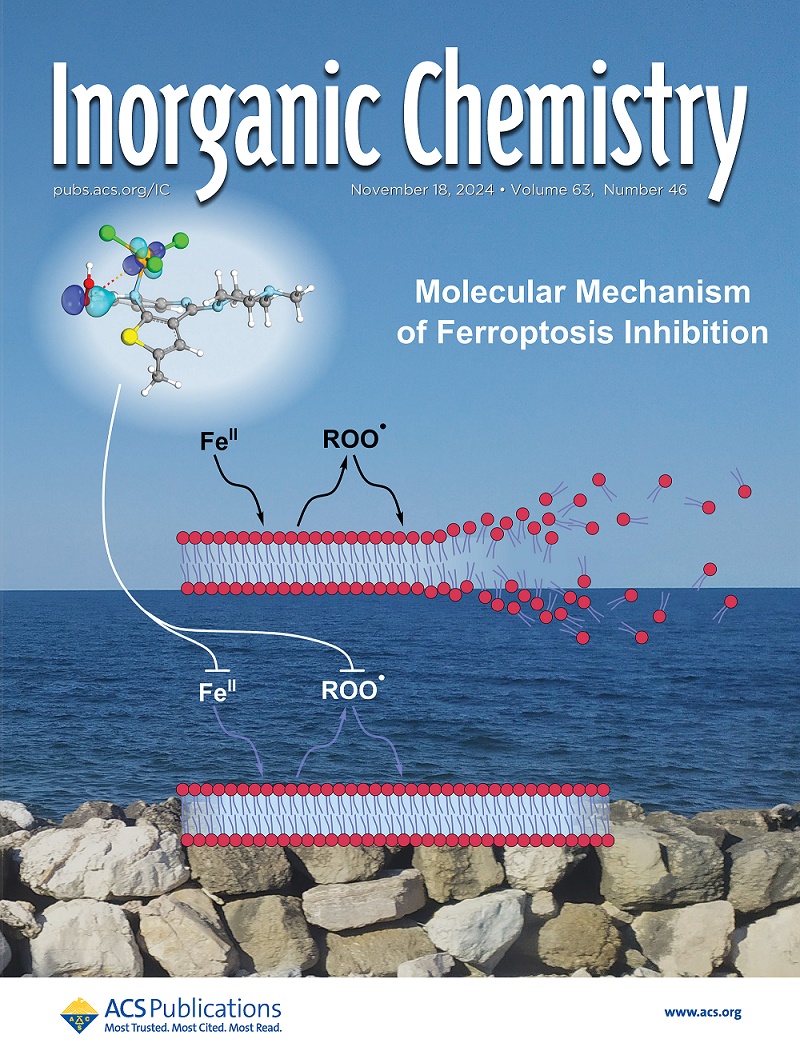配位饱和钌催化剂电催化氨氧化研究。
IF 4.7
2区 化学
Q1 CHEMISTRY, INORGANIC & NUCLEAR
引用次数: 0
摘要
本文描述了一种配位饱和配合物[Ru(tpy)(dmabpy)Cl]+ ([Ru(Cl)]+)作为氨氧化催化剂的研究。循环伏安法测量结果显示出理想的s形波,表明总催化条件为9360 h-1。该反应在[Ru(Cl)]+中为一级反应,在[NH3]中为三级反应。采用1H和15N核磁共振谱技术,对加入15NH3后的单电子氧化物质[Ru(Cl)]2+的化学计量反应进行了监测。这些实验表明,氯化物配位配合物能快速地将NH3转化为N2。核磁共振波谱和电化学结果明确表明,NH3不会取代Cl-配体形成先前报道的[Ru(NH3)]2+催化剂,该催化剂通过不同的机制途径起作用。综上所述,这些结果表明了外球电子转移介导的氨氧化反应。本文章由计算机程序翻译,如有差异,请以英文原文为准。
Electrocatalytic Ammonia Oxidation with Coordinatively Saturated Ruthenium Catalyst.
This communication describes the investigation of a coordinatively saturated complex [Ru(tpy)(dmabpy)Cl]+ ([Ru(Cl)]+) as an ammonia oxidation catalyst. Cyclic voltammetry measurements show an ideal S-shaped wave, indicating total catalysis conditions with a kobs (TOFmax) of 9360 h-1. The reaction was found to be first-order in [Ru(Cl)]+ and third-order in [NH3]. Stoichiometric reactions of the one-electron oxidized species, [Ru(Cl)]2+, were monitored following the addition of 15NH3 using 1H and 15N NMR spectroscopy. These experiments showed that the chloride-coordinated complex rapidly converts NH3 to N2. NMR spectroscopy and electrochemistry results definitively show that NH3 does not substitute the Cl- ligand to form the previously reported [Ru(NH3)]2+ catalyst which operates by a different mechanistic pathway. Taken together these results indicate outersphere electron transfer mediated ammonia oxidation reaction.
求助全文
通过发布文献求助,成功后即可免费获取论文全文。
去求助
来源期刊

Inorganic Chemistry
化学-无机化学与核化学
CiteScore
7.60
自引率
13.00%
发文量
1960
审稿时长
1.9 months
期刊介绍:
Inorganic Chemistry publishes fundamental studies in all phases of inorganic chemistry. Coverage includes experimental and theoretical reports on quantitative studies of structure and thermodynamics, kinetics, mechanisms of inorganic reactions, bioinorganic chemistry, and relevant aspects of organometallic chemistry, solid-state phenomena, and chemical bonding theory. Emphasis is placed on the synthesis, structure, thermodynamics, reactivity, spectroscopy, and bonding properties of significant new and known compounds.
 求助内容:
求助内容: 应助结果提醒方式:
应助结果提醒方式:


